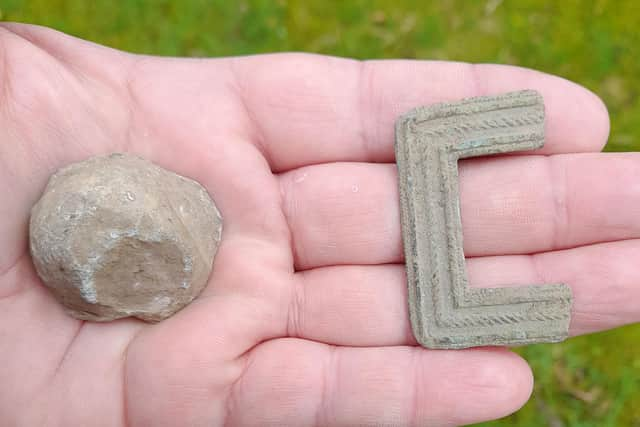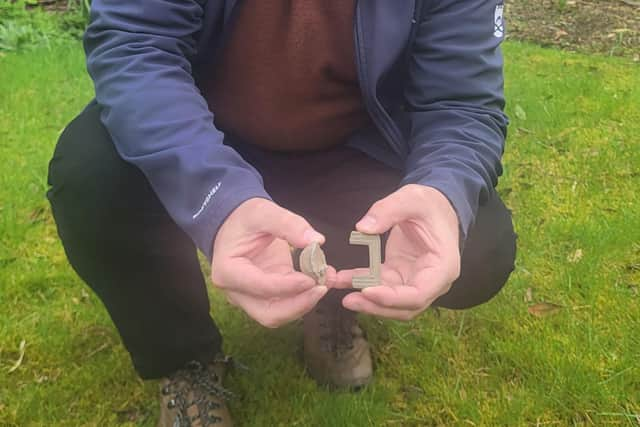Culloden: Shoe buckle found thought to have belonged to Scottish Highland clan chief wounded in battle
Archaeologists have uncovered artefacts including a shoe buckle thought to have belonged to a clan chief wounded in battle at Culloden.
A large number of musket balls and grapeshot have also been discovered in a 60sqm area close to what was the Government frontline at Culloden Battlefield.
Advertisement
Hide AdAdvertisement
Hide AdThe National Trust for Scotland (NTS) has revealed the findings ahead of the 278th anniversary of the battle on April 16, 1746, which saw about 1,600 men killed in less than an hour and marked the end of the 1745 Jacobite rising.


Two items found in close proximity – a single piece of heavy, lead, grape shot and a broken, copper alloy buckle – were of particular interest to NTS archaeologists.
It is thought the buckle may have belonged to Donald Cameron of Lochiel, the hereditary chief of Clan Cameron and a staunch Jacobite, who led the 400-strong Cameron regiment into the battle.
Derek Alexander, NTS head of archaeology, said: “The grape shot has obviously hit something with great force as one side of the lead ball has been completely flattened.
“The juxtaposition of both these artefacts, recovered from the same hole and within 20m-30m of the British Army front line, is intriguing and the obvious conclusion would be that the grape shot hit the shoe buckle and broke off one end.


“This is of particular significance as one of the most recounted stories of the Jacobite charge at Culloden is the wounding of Donald Cameron of Lochiel, known as The Gentle Lochiel.
“The late Christopher Duffy, a leading authority on the Battle of Culloden, tells how Lochiel, advancing at the head of his regiment [the Camerons], was so near Barrell’s [government regiment] that he fired his pistol, and was drawing his sword when he fell, wounded with grapeshot in both ankles.
“This description shows us that Lochiel was hit in the ankles charging forward and if he had been wearing shoes with buckles, it is possible that these would have been hit and partly absorbed the impact. We can’t prove that this is what happened, but both objects combine to tell the story of the terrible events that took place on that day.”
Advertisement
Hide AdAdvertisement
Hide AdDonald Cameron of Lochiel (1695-1748) played a key role in the 1745 Rising. Despite being wounded at Culloden, he managed to escape to France with Bonnie Prince Charlie in September 1746 and died of a stroke in northern France at the age of 53 in 1748.
After the rising, Cameron was give the nickname “The Gentle Lochiel” due to him preventing the Jacobite army from sacking the city of Glasgow in 1746.
Donald Cameron of Lochiel, the existing 28th clan chief, said: “This fascinating archaeological discovery adds to the legends surrounding one of my most famous ancestors, the Gentle Lochiel, and certainly tallies with the fact that he was injured by grape shot in that particular location at Culloden. We will, of course, never know the full picture, but it’s intriguing that the battlefield is still producing such interesting artefacts even today.”
The discoveries were made during test pit excavation and metal detecting late last year at the site and experts have since been processing the finds.
Comments
Want to join the conversation? Please or to comment on this article.